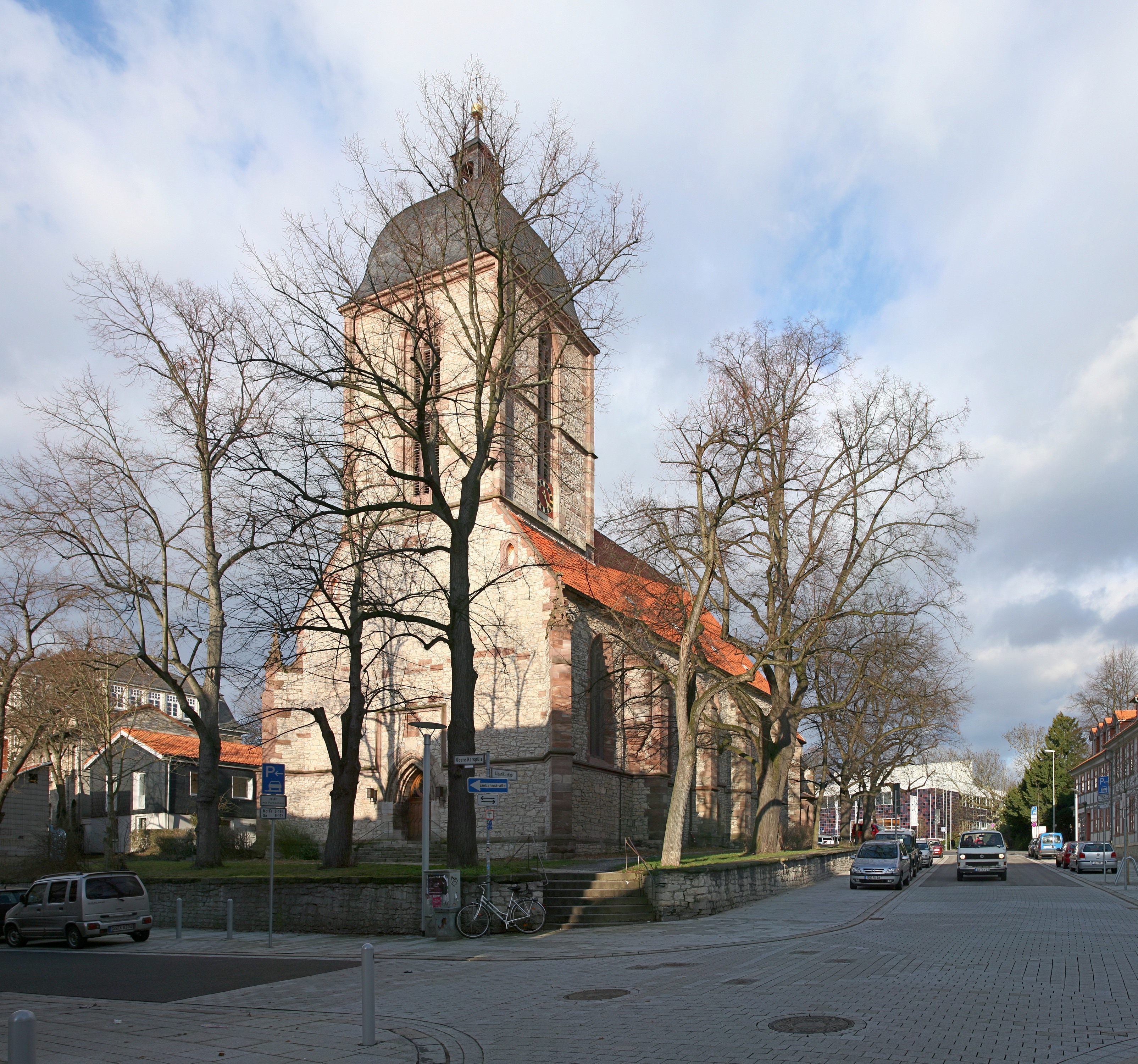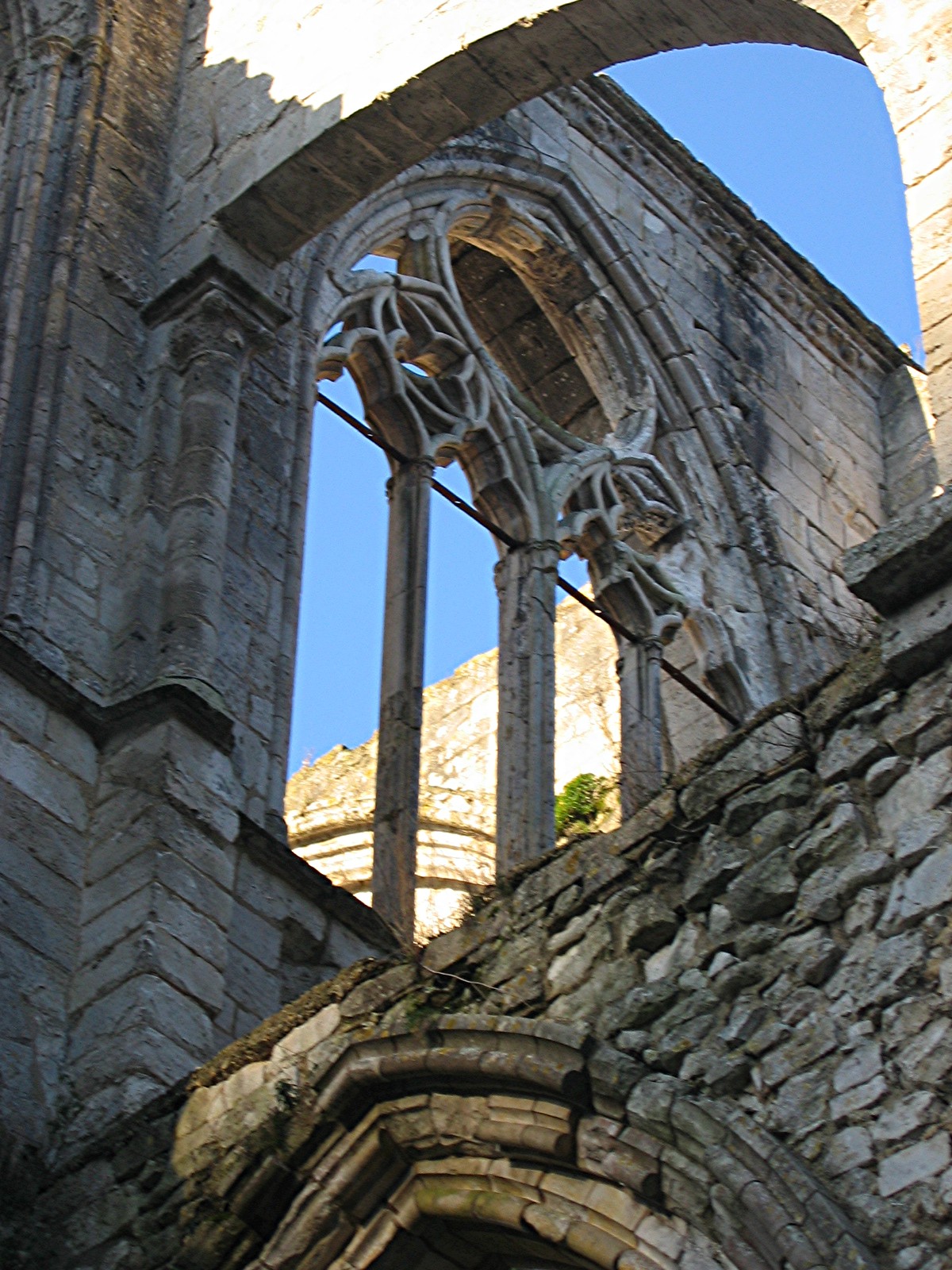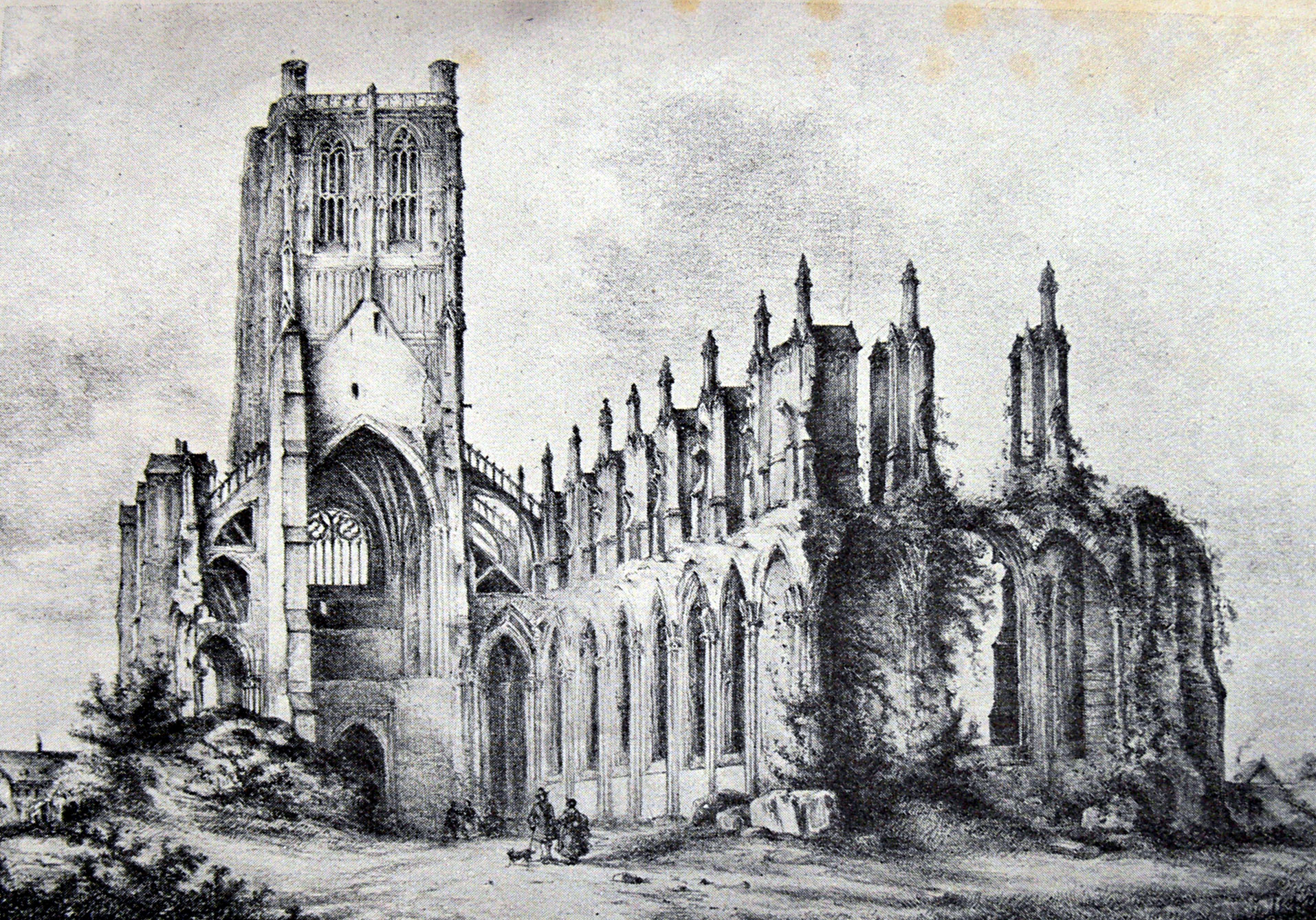|
Childeric III
Childeric III ( 717 – 754) was King of the Franks from 743 until he was deposed in 751 by Pepin the Short. He was the last Frankish king from the Merovingian dynasty. Once Childeric was deposed, Pepin became king, initiating the Carolingian dynasty. Background Following the reign of Dagobert I (629–634), the power of the Merovingian kings gradually declined into a ceremonial role, while the real power in the Francia, Frankish kingdom was increasingly wielded by the mayor of the palace, mayors of the palace. In 718, Charles Martel combined the roles of mayor of the palace of Neustria and mayor of the palace of Austrasia, consolidating his position as the most powerful man in Francia. After the death of king Theuderic IV in 737, Charles Martel ruled without a king on the throne. After Charles Martel's death in 741, Carloman, son of Charles Martel, Carloman and Pepin the Short, his sons by his first wife Rotrude, became co-mayors of the palace. However, they soon faced revolt ... [...More Info...] [...Related Items...] OR: [Wikipedia] [Google] [Baidu] |
King Of The Franks
The Franks, Germanic peoples that invaded the Western Roman Empire in the 5th century, were first led by individuals called dux, dukes and monarch, reguli. The earliest group of Franks that rose to prominence was the Salian Franks, Salian Merovingian dynasty, Merovingians, who conquered most of Roman Gaul, as well as the Gaulish territory of the Visigothic Kingdom, following the Battle of Vouillé in 507 AD. The sons of Clovis I, the first King of the Franks, conquered the Kingdom of the Burgundians, Burgundian and the Alamannia, Alamanni Kingdoms. They acquired Provence, and went on to make the peoples of the Bavarii and Thuringii their clients. The Merovingians were later replaced by the new Carolingian dynasty in the 8th century. By the late 10th century, the Carolingians themselves had been replaced throughout much of their realm by other dynasties. A timeline of Frankish rulers has been difficult to trace since the realm, according to old Germanic practice, was frequently ... [...More Info...] [...Related Items...] OR: [Wikipedia] [Google] [Baidu] |
Bullock Cart
A bullock cart or ox cart (sometimes called a Carriage#Bullock carriage, bullock carriage when carrying people in particular) is a two-wheeled or four-wheeled vehicle pulled by oxen. It is a means of transportation used since ancient times in many parts of the world. They are still used today where modern vehicles are too expensive or less suitable for the local infrastructure. Used especially for carrying goods, the bullock cart is pulled by one or several oxen. The cart is attached to an ox team by a special chain attached to yokes, but a rope may also be used for one or two animals. The driver, and any other passengers, sit on the front of the cart, while load (if there is any) is placed in the back. Traditionally, the cargo has been agrarian goods and lumber. History The first indications of the use of a wagon (cart tracks, incisions, model wheels) are dated to around 4400 BC. The oldest wooden wheels usable for transport were found in southern Russia and dated to 3325 ± 1 ... [...More Info...] [...Related Items...] OR: [Wikipedia] [Google] [Baidu] |
Chronicle Of Fredegar
The ''Chronicle of Fredegar'' is the conventional title used for a 7th-century Frankish chronicle that was probably written in Burgundy. The author is unknown and the attribution to Fredegar dates only from the 16th century. The chronicle begins with the creation of the world and ends in AD 642. There are also a few references to events up to 658. Some copies of the manuscript contain an abridged version of the chronicle up to the date of 642, but include additional sections written under the Carolingian dynasty that end with the death of Pepin the Short in 768. The ''Chronicle of Fredegar'' with its ''Continuations'' is one of the few sources that provide information on the Merovingian dynasty for the period after 591 when Gregory of Tours' the ''Decem Libri Historiarum'' finishes. Authorship None of the surviving manuscripts specify the name of the author. The name "Fredegar" (modern French Frédégaire) was first used for the chronicle in 1579 by Claude Fauchet in his ... [...More Info...] [...Related Items...] OR: [Wikipedia] [Google] [Baidu] |
John Michael Wallace-Hadrill
John Michael Wallace-Hadrill (29 September 1916 – 3 November 1985) was a British academic and one of the foremost historians of the early Merovingian period. He held the Chichele Chair in Modern History at the University of Oxford between 1974 and 1983. Life and career Wallace-Hadrill was born on 29 September 1916 in Bromsgrove, Worcestershire, where his father was a master at Bromsgrove School. He was Professor of Mediaeval History at the University of Manchester between 1955 and 1961. He then became a Senior Research Fellow of Merton College in the University of Oxford (where he held the office of Sub-Warden) from 1961 till 1974. He was Chichele Professor of Modern History at Oxford from 1974 to 1983 and, between 1974 and 1985, a Fellow at All Souls College, Oxford. He was elected a Fellow of the British Academy in 1969 and delivered the Ford Lectures in 1971. He was a Vice-President of the Royal Historical Society between 1973 and 1976. He was appointed a Commande ... [...More Info...] [...Related Items...] OR: [Wikipedia] [Google] [Baidu] |
Ernest Lavisse
Ernest Lavisse (; 17 December 184218 August 1922) was a French historian. He was nominated for the Nobel Prize in Literature five times. Lavisse is also known for being one of the main creator of the ''roman national'' ("National myth", lit. "national novel"), thanks to his history schoolbooks. Biography He was born at Le Nouvion-en-Thiérache, Aisne. In 1865 he obtained a fellowship in history, and in 1875 became a doctor of letters; he was appointed ''maître de conférence'' (1876) at the École Normale Supérieure, succeeding Fustel de Coulanges, and then professor of modern history at the Sorbonne (1888), in the place of Henri Wallon. He was an eloquent professor and very fond of young people, and played an important part in the revival of higher studies in France after 1871. His learning was displayed in his public lectures and his addresses, in his private lessons, where he taught a small number of pupils the historical method, and in his books, where he wrote ''ad pr ... [...More Info...] [...Related Items...] OR: [Wikipedia] [Google] [Baidu] |
Paris
Paris () is the Capital city, capital and List of communes in France with over 20,000 inhabitants, largest city of France. With an estimated population of 2,048,472 residents in January 2025 in an area of more than , Paris is the List of cities in the European Union by population within city limits, fourth-most populous city in the European Union and the List of cities proper by population density, 30th most densely populated city in the world in 2022. Since the 17th century, Paris has been one of the world's major centres of finance, diplomacy, commerce, culture, Fashion capital, fashion, and gastronomy. Because of its leading role in the French art, arts and Science and technology in France, sciences and its early adoption of extensive street lighting, Paris became known as the City of Light in the 19th century. The City of Paris is the centre of the Île-de-France region, or Paris Region, with an official estimated population of 12,271,794 inhabitants in January 2023, or ... [...More Info...] [...Related Items...] OR: [Wikipedia] [Google] [Baidu] |
Antwerp
Antwerp (; ; ) is a City status in Belgium, city and a Municipalities of Belgium, municipality in the Flemish Region of Belgium. It is the capital and largest city of Antwerp Province, and the third-largest city in Belgium by area at , after Tournai and Couvin. With a population of 565,039, it is the List of most populous municipalities in Belgium, most populous municipality in Belgium, and with a metropolitan population of over 1.2 million people, the country's Metropolitan areas in Belgium, second-largest metropolitan area after Brussels. Definitions of metropolitan areas in Belgium. Flowing through Antwerp is the river Scheldt. Antwerp is linked to the North Sea by the river's Western Scheldt, Westerschelde estuary. It is about north of Brussels, and about south of the Netherlands, Dutch border. The Port of Antwerp is one of the biggest in the world, ranking second in Europe after Rotterdam and List of world's busiest container ports, within the top 20 globally. The city ... [...More Info...] [...Related Items...] OR: [Wikipedia] [Google] [Baidu] |
Jean-Jacques Chifflet
Jean-Jacques Chifflet (Chiflet) (Besançon, 1588–1660) was a physician, jurist, antiquarian and archaeologist originally from the County of Burgundy (now in France). Life He visited Paris and Montpellier, and travelled in Italy and Germany. By appointment of Philip IV of Spain he was physician to the Brussels court. He played a significant part in the controversy of the 1650s over Peruvian bark in treating malaria, publishing a sceptical pamphlet ''Pulvis Febrifugus Orbis Americani'' in 1653 after treating Archduke Leopold. At the behest of his employer, Archduke Leopold Wilhelm of Austria, who was then Governor of the Spanish Netherlands, he studied the objects which had been recovered from the tomb of Childeric I in Tournai. In 1655, Chifflet published at the Plantin Press in Antwerp an illustrated report on his findings entitled ''Anastasis Childerici I. Francorvm Regis, sive Thesavrvs Sepvlchralis Tornaci Neruiorum ... '' (The Resurrection of Childeric the First, King ... [...More Info...] [...Related Items...] OR: [Wikipedia] [Google] [Baidu] |
Göttingen
Göttingen (, ; ; ) is a college town, university city in Lower Saxony, central Germany, the Capital (political), capital of Göttingen (district), the eponymous district. The River Leine runs through it. According to the 2022 German census, the population of Göttingen was 124,548. Overview The origins of Göttingen lay in a village called ''Gutingi, ''first mentioned in a document in 953 AD. The city was founded northwest of this village, between 1150 and 1200 AD, and adopted its name. In Middle Ages, medieval times the city was a member of the Hanseatic League and hence a wealthy town. Today, Göttingen is famous for its old university (''Georgia Augusta'', or University of Göttingen, "Georg-August-Universität"), which was founded in 1734 (first classes in 1737) and became the most visited university of Europe. In 1837, seven professors protested against the absolute sovereignty of the House of Hanover, kings of Kingdom of Hanover, Hanover; they lost their positions, but ... [...More Info...] [...Related Items...] OR: [Wikipedia] [Google] [Baidu] |
Saint-Wandrille
Fontenelle Abbey or the Abbey of St. Wandrille is a Benedictine monastery in the commune of Rives-en-Seine. It was founded in 649 near Caudebec-en-Caux in Seine-Maritime, Normandy, France. First foundation It was founded by Wandregisel (d. 22 July 668, Wandrille in French) and his nephew Godo, on land obtained through the influence of Wandregisel's friend Ouen, Archbishop of Rouen. Wandrille, being of the royal family of Austrasia, held a high position in the court of his kinsman Dagobert I, but wishing to devote his life to God, he retired to the abbey of Montfaucon-d'Argonne, in Champagne, in 629. Later he went to Bobbio Abbey and then to Romainmôtier Abbey, where he remained for ten years. In 648 he returned to Normandy and established the monastery of Fontenelle,Alston, George Cyprian. ... [...More Info...] [...Related Items...] OR: [Wikipedia] [Google] [Baidu] |
Saint-Omer
Saint-Omer (; ; Picard: ''Saint-Onmé'') is a commune and sub-prefecture of the Pas-de-Calais department in France. It is west-northwest of Lille on the railway to Calais, and is located in the Artois province. The town is named after Saint Audomar, who brought Christianity to the area. The canalised section of the river Aa begins at Saint-Omer, reaching the North Sea at Gravelines in northern France. Below its walls, the Aa connects with the Neufossé Canal, which ends at the river Lys. History Saint-Omer first appeared in the writings during the 7th century under the name of Sithiu (Sithieu or Sitdiu), around the Saint-Bertin abbey founded on the initiative of Audomar, (Odemaars or Omer). Omer, bishop of Thérouanne, in the 7th century established the Abbey of Saint Bertin, from which that of Notre-Dame was an offshoot. Rivalry and dissension, which lasted till the French Revolution, soon sprang up between the two monasteries, becoming especially virulent when ... [...More Info...] [...Related Items...] OR: [Wikipedia] [Google] [Baidu] |
Abbey Of Saint Bertinus
The Abbey of Saint Bertin was a Benedictine monastic abbey in Saint-Omer, France. The buildings are now in ruins, which are open to the public. It was initially dedicated to but was rededicated to its second abbot, . The abbey is known for its Latin cartulary (') whose first part is attributed to Folcwin. The abbey was founded on the banks of the Aa in the 7th century by Bishop Audomar of Thérouanne, who is now better known as . He sent the monks Bertin, Momelin, and Ebertram from Sithiu (now St-Omer) to proselytize among the pagans in the region. The abbey soon became one of the most influential monasteries in northern Europe and ranked in importance with Elnon (now St-Amand Abbey) and . Its library included the codex of the Leiden Aratea, from which two copies were made. The Annals of St Bertin are an important source of the history of 9th-century France. Already in the 9th century, the abbey had a priory in Poperinge. A Romanesque church was constructed in the mid-11t ... [...More Info...] [...Related Items...] OR: [Wikipedia] [Google] [Baidu] |






